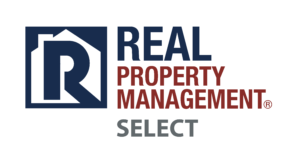The Most Important Strategy to Dodge Sky-High Tenant Turnover Expenses!
Sure, you might think you have all the rules-of-thumb down for keeping turnover costs low with a rental property. You know, the typical procedures like thorough tenant screenings and yearly inspections. But, there’s more to it than that, right?
Take a moment and think… What could be the make-or-break factor in deciding whether we return the security deposit to our tenant, or have to head to court to get back turnover costs chalked up to damage or negligence? Any ideas?
We get it, it doesn’t leap to mind when we’re brainstorming ways to keep rental turnover costs down.
The key? That vital move-in inspection.
Wait a minute, were you expecting some grand secret? Stick with us.
Sure, a move-in inspection is par for the course when we rent out to a new tenant. But how much care and attention do we actually pour into these inspections? We’d wager we’re not doing them as well as we should, and that might be costing us big bucks at the next tenant turnover.
The Unexpected Pitfalls of an Inadequate Move-In Inspection: A True Story
Let us paint a picture for you: most of our rental properties are sprinkled across different states, far from our usual reach. It’s a common practice in our line of business to hire property managers to supervise these far-flung properties. But don’t be fooled, dealing with property managers can be a roller coaster ride of its own. The once reliable manager merely becomes a heartache, forcing us to show them the door and find a new pair of trustworthy eyes and ears.
A few memorable years back, one of our previously trusty property managers fell from grace, and we had to replace him. Shortly after the new, seemingly competent manager took the reins, we were greeted with a sour surprise: a tenant suddenly stopped paying rent and relocated, leaving a vacant property urgently in need of new tenants.
The property manager, ever diligent, rushed to inspect the site to launch the turnover process. But right from the onset, there were glaring warning signs— the tenant’s possessions haphazardly strewn across the front yard. You can imagine the shiver of dread that ran down our spines, as we pondered on the potential chaos behind closed doors.
Unfortunately, our fears turned into reality. Upon entering, we were greeted by damaged walls, ripped carpets, defunct kitchen appliances, missing light covers, and an overall dejected condition of the property. While it could have been worse, there was enough damage to cause a serious dent in our pocket due to the hefty turnover expenses.
Of course, contemplating the possibility of a hefty repair bill, the property manager and we chose to withhold her security deposit. Not stopping there, we started preparing our case to sue her for the additional damages.
But we hit a roadblock. In response to our notice concerning her security deposit, she simply retorted, “Those things were already like that when I moved in.” A simple, yet devastating reply. If there was weight in her words, we would have no grounds to withhold her deposit or press charges concerning property damage.
Though she was blatantly lying — we knew this because the property was pristine when she moved in — we were forced to hunt down the move-in inspection report, crucial proof we needed to expose her deceit. Given that the new property manager didn’t have this readily available, a frenzied search on our part followed. With every second that passed, we grew nervous, knowing this piece of paper was our only ticket out of an unexpected financial crisis.
With bated breath, we rummaged through our records until, finally, we located the inspection report. The sight of it made our hearts jump with relief—I sighed and opened the document, confident that we could now expose the tenant’s lie.
How to Nail Move-In Inspections: Right Vs. Wrong
It’s a no-brainer, right? The greatest blunder rental property investors commit with move-in inspections is, quite simply, neglecting to carry it out.
So, we’ve taken the initiative to conduct one. Is there an approved methodology that separates right from wrong? Let’s explore.
A staggering majority of investors (99%, to be exact) focus their move-in inspections on what’s amiss with the property – documenting and photographing every flaw or damage they can find.
This, my friend, is not the optimum way to do a move-in inspection. Confused? Let us explain.
When you only document current damages at the time of a tenant’s move-in, you’re essentially covering their backs. Upon eventual move-out, you cannot bill the tenant for those damages as they were pre-existing.
So, as an owner, our main concern should shift from cataloging flaws to what is in impeccable, flawless condition at the time of the move-in. In essence, our focus should lean toward the positives about the property rather than its negatives. Sure, document the wrongs, but realize that doing so primarily safeguards the tenant, not you.
The best move-in inspections involve detailed accounts of the property’s overall condition, spotlighting areas in tip-top shape.
